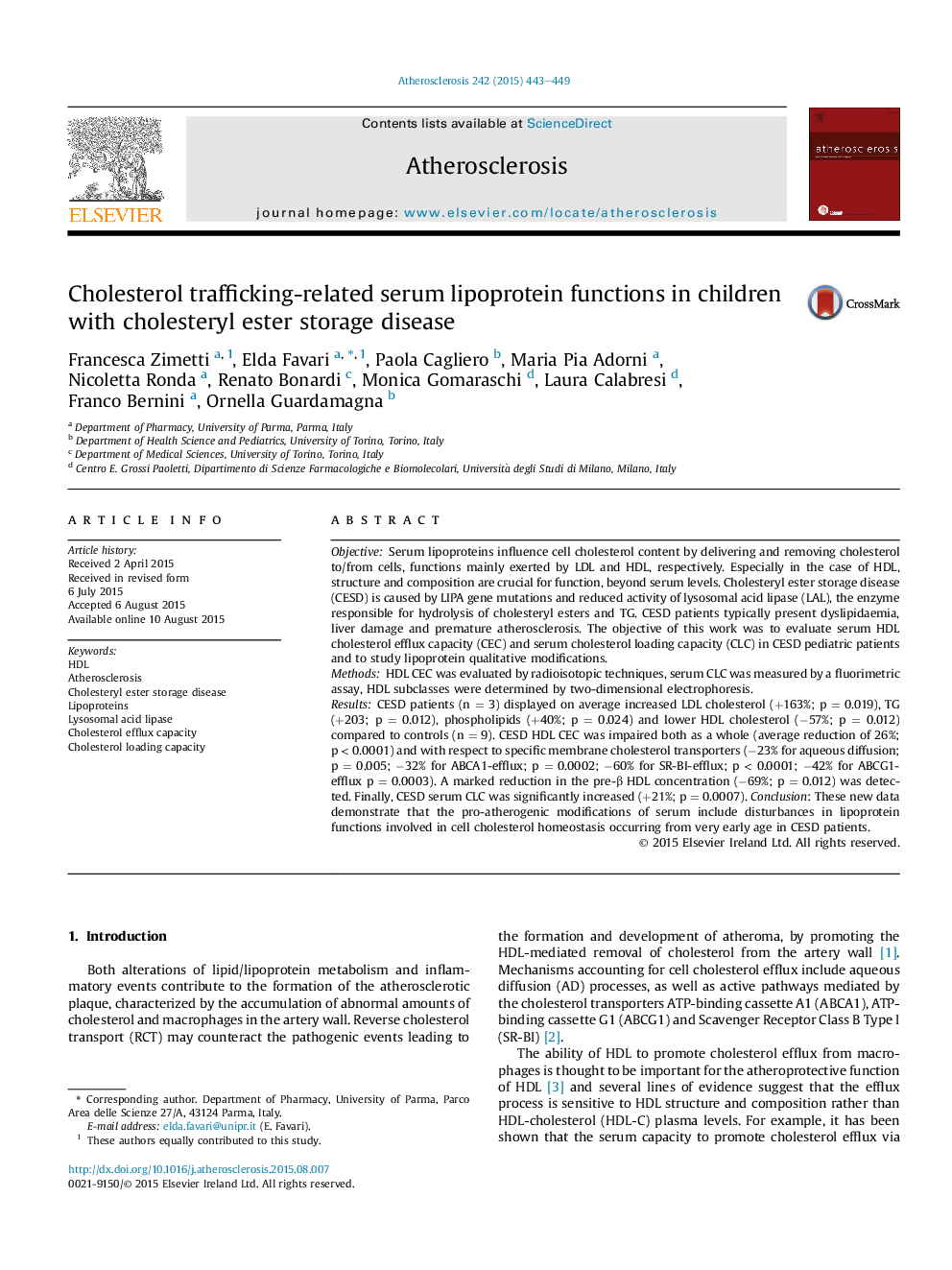| کد مقاله | کد نشریه | سال انتشار | مقاله انگلیسی | نسخه تمام متن |
|---|---|---|---|---|
| 5943825 | 1172339 | 2015 | 7 صفحه PDF | دانلود رایگان |
- Cholesteryl ester storage disease (CESD) patients show altered lipoprotein profile.
- Reduced pre-β HDL was detected.
- HDL cholesterol efflux capacity was impaired.
- Serum capacity to load cells with cholesterol was increased.
- These features may play in favor of an accelerated atherosclerosis in CESD.
ObjectiveSerum lipoproteins influence cell cholesterol content by delivering and removing cholesterol to/from cells, functions mainly exerted by LDL and HDL, respectively. Especially in the case of HDL, structure and composition are crucial for function, beyond serum levels. Cholesteryl ester storage disease (CESD) is caused by LIPA gene mutations and reduced activity of lysosomal acid lipase (LAL), the enzyme responsible for hydrolysis of cholesteryl esters and TG. CESD patients typically present dyslipidaemia, liver damage and premature atherosclerosis. The objective of this work was to evaluate serum HDL cholesterol efflux capacity (CEC) and serum cholesterol loading capacity (CLC) in CESD pediatric patients and to study lipoprotein qualitative modifications.MethodsHDL CEC was evaluated by radioisotopic techniques, serum CLC was measured by a fluorimetric assay, HDL subclasses were determined by two-dimensional electrophoresis.ResultsCESD patients (n = 3) displayed on average increased LDL cholesterol (+163%; p = 0.019), TG (+203; p = 0.012), phospholipids (+40%; p = 0.024) and lower HDL cholesterol (â57%; p = 0.012) compared to controls (n = 9). CESD HDL CEC was impaired both as a whole (average reduction of 26%; p < 0.0001) and with respect to specific membrane cholesterol transporters (â23% for aqueous diffusion; p = 0.005; â32% for ABCA1-efflux; p = 0.0002; â60% for SR-BI-efflux; p < 0.0001; â42% for ABCG1-efflux p = 0.0003). A marked reduction in the pre-β HDL concentration (â69%; p = 0.012) was detected. Finally, CESD serum CLC was significantly increased (+21%; p = 0.0007). Conclusion: These new data demonstrate that the pro-atherogenic modifications of serum include disturbances in lipoprotein functions involved in cell cholesterol homeostasis occurring from very early age in CESD patients.
105
Journal: Atherosclerosis - Volume 242, Issue 2, October 2015, Pages 443-449
